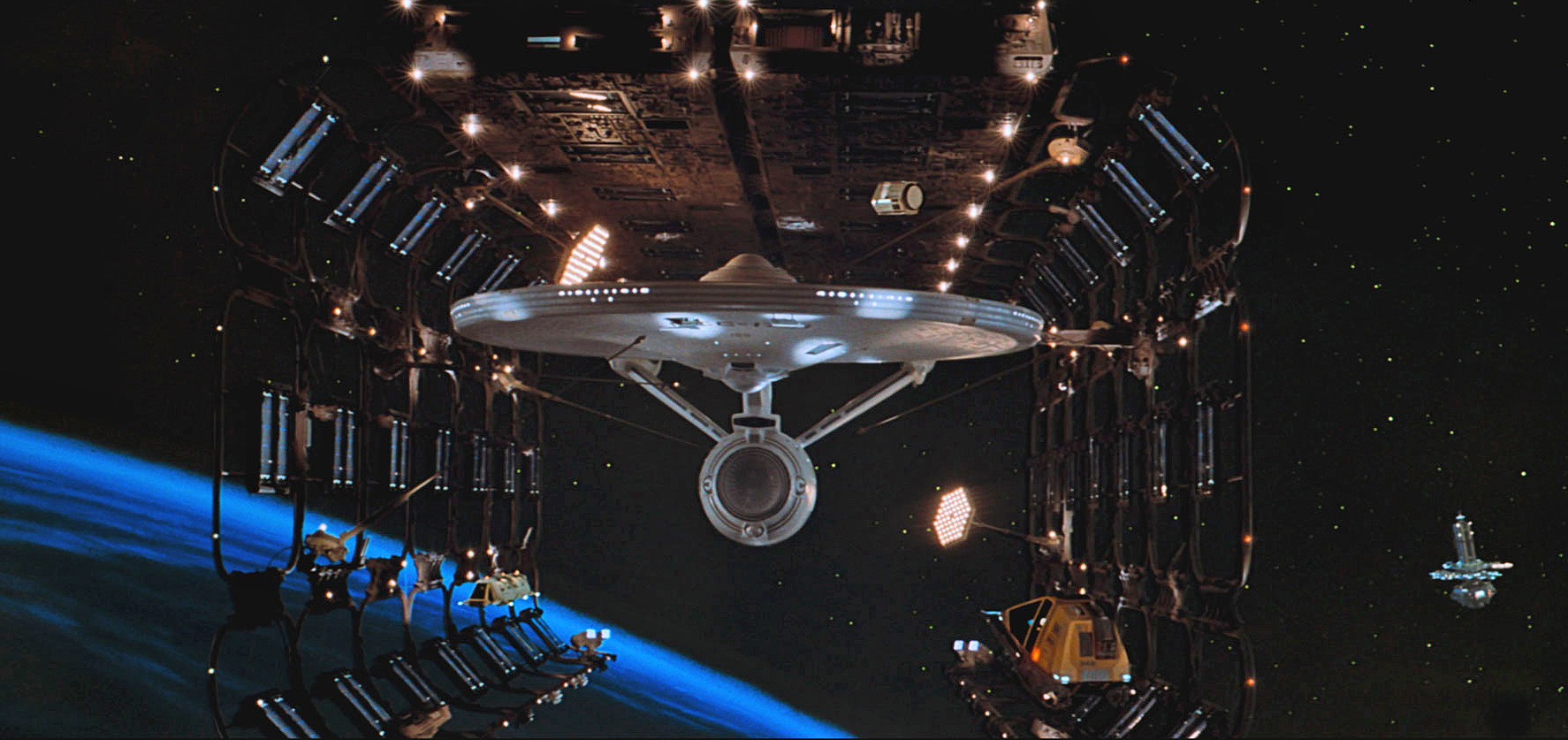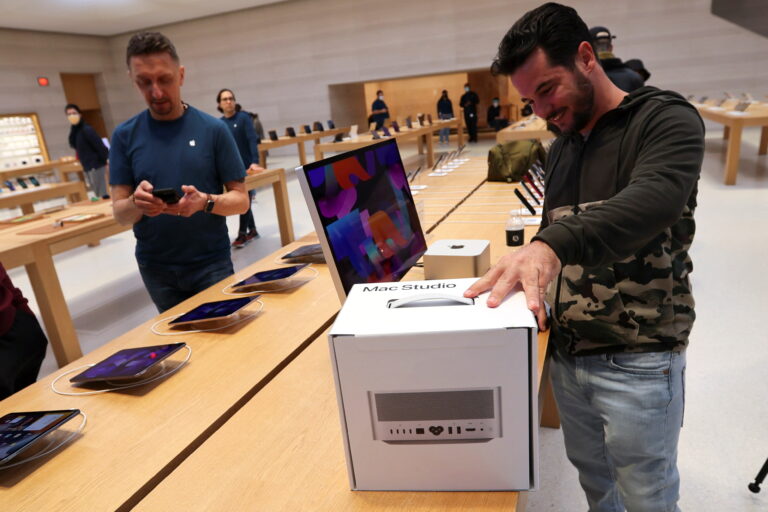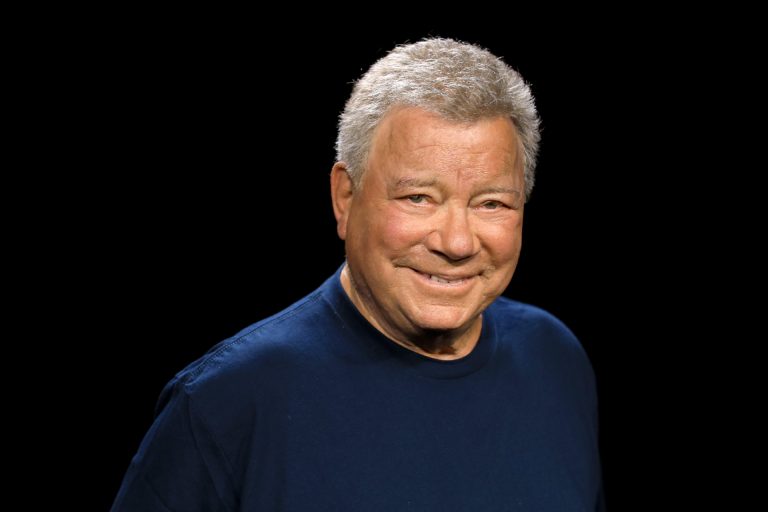‘Star Trek: The Motion Picture – The Director’s Edition’ makes its glorious return
If there was ever a Star Trek film that needed a do-over, both artistically and reputationally, it was The Motion Picture. Dismissed by critics as boring and sterile when it came out, its nickname inside Trek fandom has long been “The Motionless Picture.” In 1997, director Robert Wise started the process of re-examining the film, with a Director’s Edition being birthed at the dawn of the DVD era in 2001. For a couple of reasons, the altogether better version of that movie fell into obscurity, unavailable for most people to see. Now, twenty years after Wise’s amended film made its debut, the film has been given a second do-over in the form of a 4K remaster for Paramount+.
The Abandoned Picture
You can buy a shelf’s worth of books discussing the troubled production of The Motion Picture, and its creative failures. Paramount wanted a new Star Trek TV series, until the money men balked at the cost and potential disinterest from advertisers. The pricey show got crunched into a single movie-of-the-week, right until the moment that Star Wars (and Close Encounters) swallowed 1977 whole. Bosses wanted a slice of that late ‘70s sci-fi movie pie and upgraded the Trek project to a big-budget movie. Except none of the already-made material was movie quality, and the effects house wasn’t up to the task at hand.
The Motion Picture was directed by Robert Wise, a footnote in a career that started in 1934 and ran through 2000. Wise got his big break as Orson Welles’ editor on Citizen Kane and, more controversially, The Magnificent Ambersons. He’d won enough Academy Awards that The Motion Picture wouldn’t be in the top ten of his most notable achievements. The special effects were eventually completed by the recently-departed Douglas Trumbull and John Dykstra; both could point to 2001 and Star Wars as the highlights on their own resumes. Even so, Wise was battered by the process of making it, hand-delivering the prints to the film’s premiere and declaring it to be a rushed, unfinished job.
Length was a problem for the film, a 90-minute TV pilot expanded to more than two hours, bloated with too many special effects shots. Paramount would subsequently produce an even longer cut of the film, letting ABC screen a super-sized, 143-minute TV version which included deleted and unfinished scenes. (There is a rumor, apparently tied to this forum post from 2016 (via Memory Alpha), which suggests that Wise re-cut the film in 1980 to be 12 minutes shorter, but producer David C. Fein doesn’t believe it to be true.)
The Director’s Edition
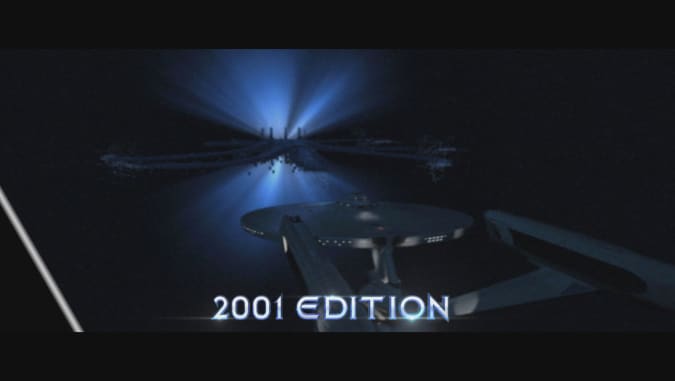
Paramount
In 1997, Wise, through his company Robert Wise Productions, enlisted the help of producer David C. Fein, post-production supervisor Michael Matessino and visual effects supervisor Daren R. Dochterman to help fix the film. They examined the original storyboards, fixed some of the more egregious effects choices and tightened the editing. While the runtime was longer, a snappier edit (more or less) helped contextualize some of the choices made back when the film was shooting. It also helped to kickstart the reappraisal of the film as something more valuable than the big-budget catastrophe it was treated as.
Part of that work was to broaden the visual palette, especially in some of the key sequences which weren’t fully-realized in ‘79. The inconsistencies during Spock’s first scene – which were shot in broad daylight but painted on a matte implying darkness – are fixed. Many sets that were constrained even with matte paintings were broadened out and CGI – by pioneers Foundation Imaging – used to fill the gaps in the action. The film remained, more or less, like it had two decades prior, but was a much more joined-up experience on screen.
But this edition, while considered “definitive,” was never re-released beyond its original 2001 DVD printing. According to Memory Alpha, it’s because Paramount never kept its own archive copies of the CGI files for its projects. And when Foundation Imaging went under after the death of its founder, Ron Thornton, it was believed that those files were gone forever.
The Re-Remaster
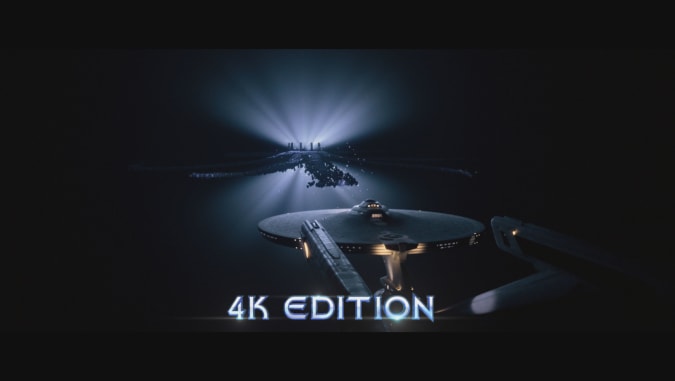
Paramount
“Completely untrue,” said David C. Fein who produced both the first Directors Edition and its 2022 successor, to Engadget. “Everything was designed to be able to go to film, but the resolution [in those original files] wasn’t there, […] so it couldn’t just be re-rendered,” he said. “It had to be recreated by people who knew what we were going for, because we’re now able to put the detail in for it to be full-size.” “We re-did all the visual effects, not from scratch – the setups [from 1999] were there – then we worked in all of the new levels of technology and information,” said Fein.
Fein says that the project, which was announced in July 2021, is “not a restoration,” and that his team wasn’t just “polishing this film,” but working to tweak it to improve the overall storytelling. That meant scanning the raw material and re-compositing everything to make a fresh, 4K scan off the original 35mm live-action footage. (Douglas Trumbull, to avoid detail loss, would shoot on 65mm film, and so his material was scanned in at 8K, while Dykstra’s VistaVision material was scanned in at 6K.)
The project is, if we’re being a little too honest, long overdue, since Paramount opted to offer the theatrical print of The Motion Picture for all of the Blu-ray releases. “Unfortunately, when the hi-def [versions of the Star Trek films] came out, Bob [Wise] got to watch the fact that it was the original theatrical version,” explained Fein. “And he sat me down in his kitchen and said, ‘I need you to promise me something Dave’ – ‘I don’t care how long it takes, I need you to finish the director’s edition and it needs to be finished,’ meaning film quality.” But Fein says that the lag time was down to a need for the technology to improve, and also for the “guardian angels” at Paramount+ to greenlight the work.
There are a number of small tweaks to the film, designed to smooth out even more of its visual rough edges. Keen-eyed fans will enjoy spotting the additions and changes, an early highlight is the addition of Shuttle Pod 5 to the exterior of Starfleet’s orbital office. “Just about every shot [in the film] has been touched in some way, there’s a lot of subtlety added to shots,” he said. “There’s [also] at least one clearly new shot in the film that helps continuity, and I hope no-one else notices it.”
One sequence that Fein spent lots of effort on, both then and now, was when the V’Ger probe attacks the bridge. The original film sequence was projected through a bent mylar filter with intentionally harsh lighting to create the alien effect. “The way that it looked, was almost like [our] film stopped and another one started,” he explained, looking at the washed-out colors, high grain and poor continuity. Fein credits the power of HDR which enabled his team to create a harsh overexposure of the probe without dulling the rest of the film.
And a less obvious change – unless you’re like me and watched multiple versions side-by-side – is a vastly improved color grade. Because the film was so rushed, Fein explained, the process of color grading, which can take months, was crunched down to four days. He said that the crew’s opinion, at the time, was “just ‘let’s get it done as flat [as we can] so everything matched, and [get it done] as quickly as it could.” The film’s colors are, traditionally, washed out, leaden with that ‘70s sci-fi beige that makes even the actors look like pieces of furniture. “Now that we’re working from negative scans, we’re able to do what [Robert Wise’s] real intention was.”
The final task Fein had to oversee was to ensure that The Directors Edition is no longer a rare curio. Fein explained that, having worked with the digital negatives and produced a new print designed for theatrical distribution, the film is now “future proof.” That should ensure that it never again becomes the sort of film you have to actively seek out to watch. Not to mention that Fathom events will offer a handful of screenings (in select theaters) for viewers to see the film on the big screen once again.
Give me a Good Time
I don’t want to be facetious when I say that The Motion Picture is less of a film and more of an experience. For all of the complaints that the film was slow, antiseptic and cold, it also offers something a little more heavyweight than you may expect from a franchise movie. The team behind the film may not have been making Solaris, or 2001, but those influences are keenly felt through much of the movie. It’s not dumb noisy fun, and it’s not as clever as it thinks it might be, but it’s trying to deal with some weighty issues around what it means to be human. A computer looking to understand if there’s any meaning beyond its existence is something fiction has come back to again and again – it’s always been a fascination for Star Trek, too.
Unfortunately, I didn’t get to watch the 4K transfer in all of its glory, since previews were capped at 1080p (I know). What is obvious, however, is that the new version is a whole lot brighter, with much more detailed CG models and much better sound, in most places. The new color grade makes a huge difference, with actors no longer blending into the background of their own film. There are only a few moments where the transfer seems less kind than you may expect, and that’s mostly when you go looking for matte lines. You can clearly see some of that hand-cut wonkiness in the more detail-heavy sequences, like the drydock scene.
(While we’re on the subject; the Drydock sequence is considered, by non fans, as the ne plus ultra of pointless fan service. Yes, it’s a six-minute scene in which Kirk stares, milky-eyed at the refitted Enterprise, well-known enough that even nü-Trek repeatedly tips its hat to it. But let’s be honest, if you wanted to spend six minutes staring at a model, you might as well make it the most beautiful model ever to be created.)
And as much as it’s Wise’s name on the film, in these modern eras, I think we should also offer kudos to Trumbull and Dykstra for their contribution. The effects sequences are, for their age, some of the best ever put to film and the trippy late ‘70s sci-fi visuals during the spacewalk sequence are on a par with anything 2001 offered. I can’t not also say that, without Jerry Goldsmith’s score, one of the best ever written, much of this film wouldn’t hold together nearly as well as it does. While the finished product is not to everyone’s taste, you can tell it is the product of a number of virtuosos all working to produce their very best work.
It’s funny, because I’d say that I’ve seen this film more times than I should probably admit, especially the first 40 minutes. Something that only occurred to me during this rewatch is how Wise’s direction, and the acting, loosens up as things go on. Kirk, Spock and McCoy all start this film stiff and stagey, acting like they’re all trying to act under the effects of a sedative. But once they’ve returned to the Enterprise and you see Kirk visibly relax into his chair, Spock and McCoy start bantering, and you could almost frame this as a deliberate choice to make the film a form of origin story.
While researching this piece, I went hunting for critical reviews of the film back when it first debuted in 1979. (The best modern essay on the film, and the best modern essays on any of the Star Trek films, is Darren Franich’s 2016 retrospective, which I urge you to read.) Weirdly, Roger Ebert wrote the smartest take on the film back then, and I reckon the conclusion of his review is probably the most elegant way anyone could discuss it. He wrote, “Some of the early reviews seemed pretty blase, as if the critics didn’t allow themselves to relish the film before racing out to pigeonhole it. My inclination, as I slid down in my seat and the stereo sound surrounded me, was to relax and let the movie give me a good time. I did and it did.”
Star Trek: The Motion Picture – The Director’s Edition, will be available on Paramount+ on April 5th, 2022. A physical media release will follow with new special features.
All products recommended by Engadget are selected by our editorial team, independent of our parent company. Some of our stories include affiliate links. If you buy something through one of these links, we may earn an affiliate commission.
